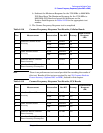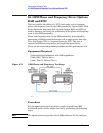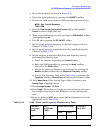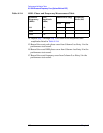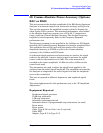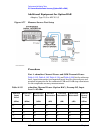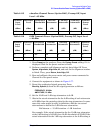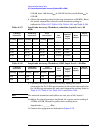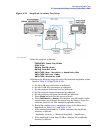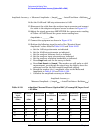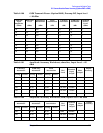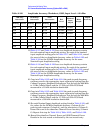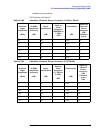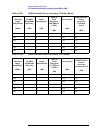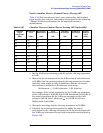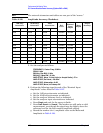
Chapter 2 413
Performance Verification Tests
59. Comms Absolute Power Accuracy (Options BAC or BAH)
Figure 2-78 Amplitude Accuracy Test Setup
12.Set the analyzer as follows:
FREQUENCY, Center Freq, 50 MHz
SPAN, 0 kHz
BW/Avg, Res BW, 10 kHz
BW/Avg
, Video BW, 10 kHz
AMPLITUDE
, More, Y Axis Units (or Amptd Units), dBm
AMPLITUDE, Ref Level, 15 dBm
AMPLITUDE, Attenuation
, 40 dB
13.Perform the following steps for each of the nominal amplitude values
listed in Table 2-115 and Table 2-116:
a. Set the 1 dB step attenuator as indicated.
b. Set the 10 dB step attenuator as indicated.
c. Set the analyzer reference level as indicated.
d. Set the analyzer input attenuation as indicated.
e. Set the analyzer resolution bandwidth as indicated.
f. Press
Single and wait for the sweep to finish.
g. Press
Peak Search (or Search). The marker can still make a valid
measurement even though the signal may be slightly above the
reference level for the first nominal amplitude setting.
h. Record the marker (Mkr1) amplitude value as the Measured
Amplitude in Table 2-117 and Table 2-118.
i. If the nominal amplitude is 15 dBm, calculate the amplitude
accuracy as follows:
j. If the amplitude is less than 15 dBm, calculate the amplitude
accuracy as follows:
Amplitude Accuracy Measured Amplitude Amptd
15dBm
–=



